
 |
Eager Space | Videos by Alpha | Videos by Date | All Video Text | Support | Community | About |
|---|

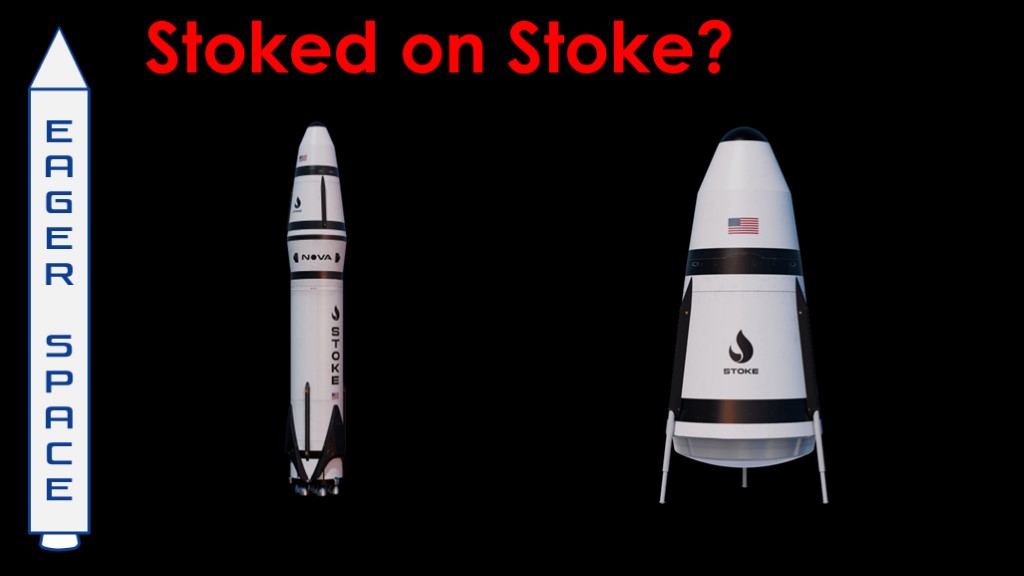
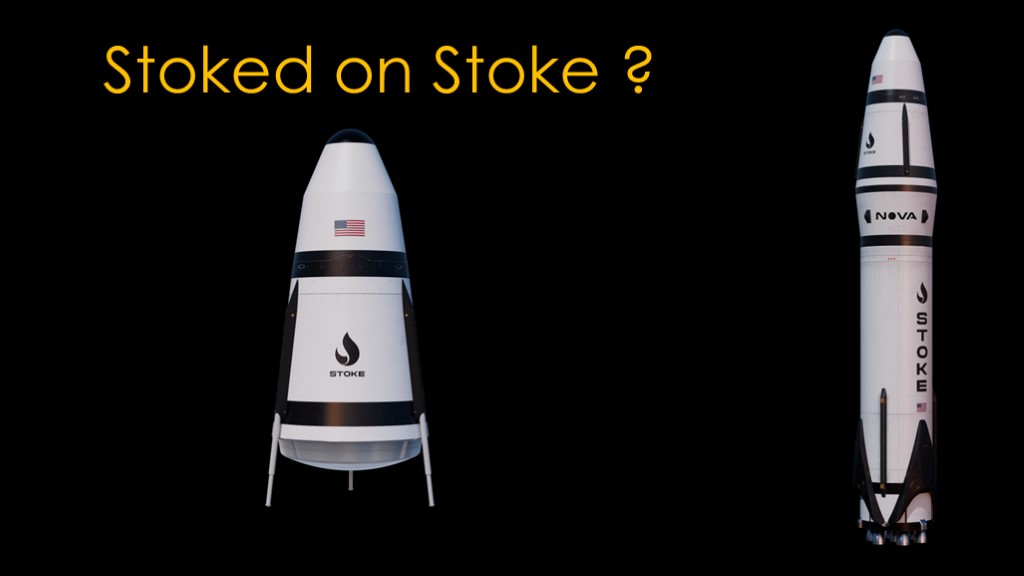
People have been asking me to talk about stoke space for a couple of years...
I long resisted it because I didn't think I had a useful perspective to add and I had no way of answering the question that I thought people really wanted answered.
But I was looking at it recently and I realized that I had a way to add something to the conversation and do the sort of analysis that I like to do.
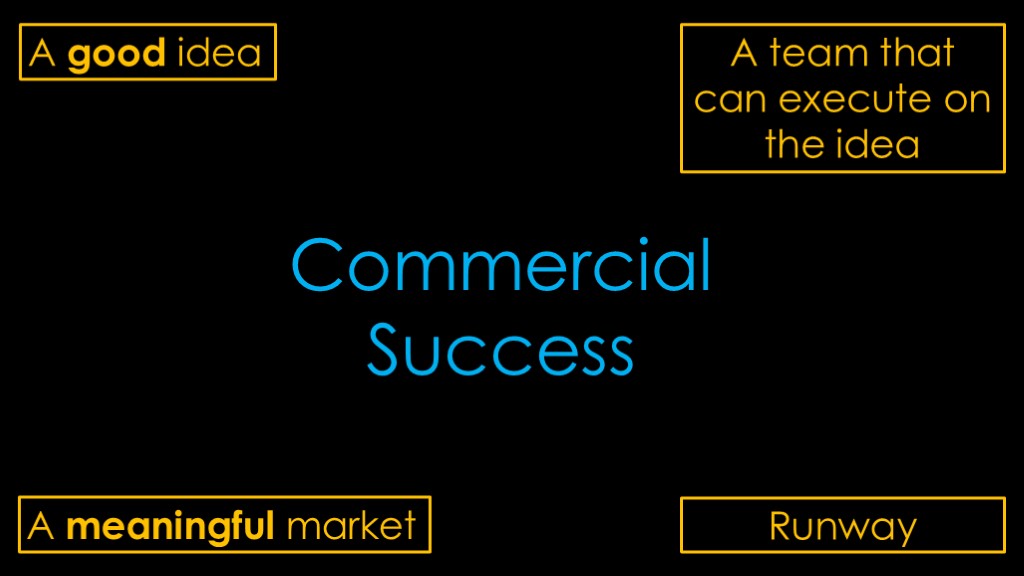
When I'm analyzing a company, I'm trying to evaluate the chances that it can become a commercial success. There are a bunch of different ways of doing such an analysis - my starting point is usually looking at 4 things that I will call my pillars of commercial success.
Pillar #1 is a good idea. Note the emphasis on the word "good". It's not a cool idea, it's not paradigm breaking idea, it's a good idea. Good ideas are often simple - remember that Amazon started with the idea "maybe we could sell books using this internet thing?"
Pillar #2 is a team that can execute on the good idea. There are the obvious technical skills required to do whatever you want to do, but you also need what I call a "founder class entrepreneur". You need somebody who understands the technical side and goal deeply, somebody who can deal with investors, and somebody who can make a dollar scream. These people are not surprisingly rare.
Pillar #3 is a meaningful market. You need people that are going to be paying you cash money. This is about having a market where your new company can be competitive enough to make money.
Pillar #4 is runway - you need time to bring your good idea to reality. An idea that is attainable and a management team that can keep your cash burn as low as practical is critical, because pretty much everything costs more and takes longer than you expect.
Now let's talk about Stoke.

We'll start with Stoke's idea, which is all about second stage reuse. SpaceX is working on that with Starship, but nobody else has even gotten to first stage reuse.
Stoke's second stage is a modified capsule shape and is made out of stainless steel. It is fueled by liquid hydrogen and liquid oxygen. Their engine uses a traditional expander cycle, where the very cold fuel is run through the rocket nozzle and the combustion heat produces a pressurized output is used to power the turbopump. This is the same cycle used by the hugely popular RL-10 upper stage engine.
There are a few different variants of the expander cycle, and it's not clear to me which one they have chosen, and that choice probably doesn't matter for the analysis.
At this point, a traditional design puts the engine with a large nozzle at the bottom of the stage, and you are off and running.
Stoke has a different idea, however. Instead of a single big combustion chamber, they are putting 30 small combustion chambers spaced equally around the outside of the second stage. These combustion chambers can be independently controlled to provide differential thrust and therefore steering.
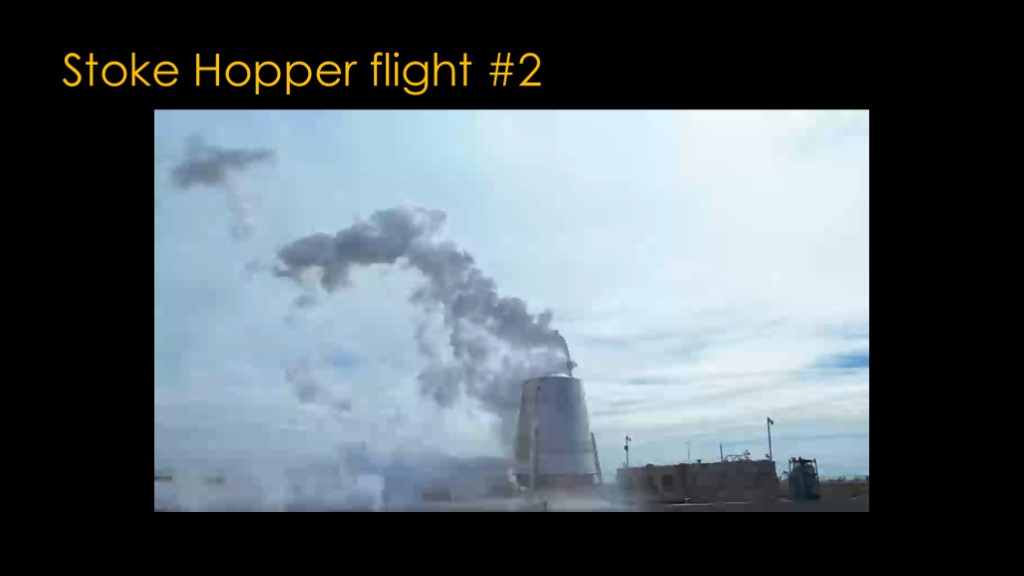
In 2023 Stoke posted this video of their second hopper flight test, which shows they are able to get their engine up and running and have enough control to achieve a hop with 15 combustion chambers.
Note that this is a very early test - a short hop is a long way from a second stage engine that runs for a full cycle and meets performance requirements.
At this point, I hope you are saying to yourself, "this looks very complicated and I don't understand the point".
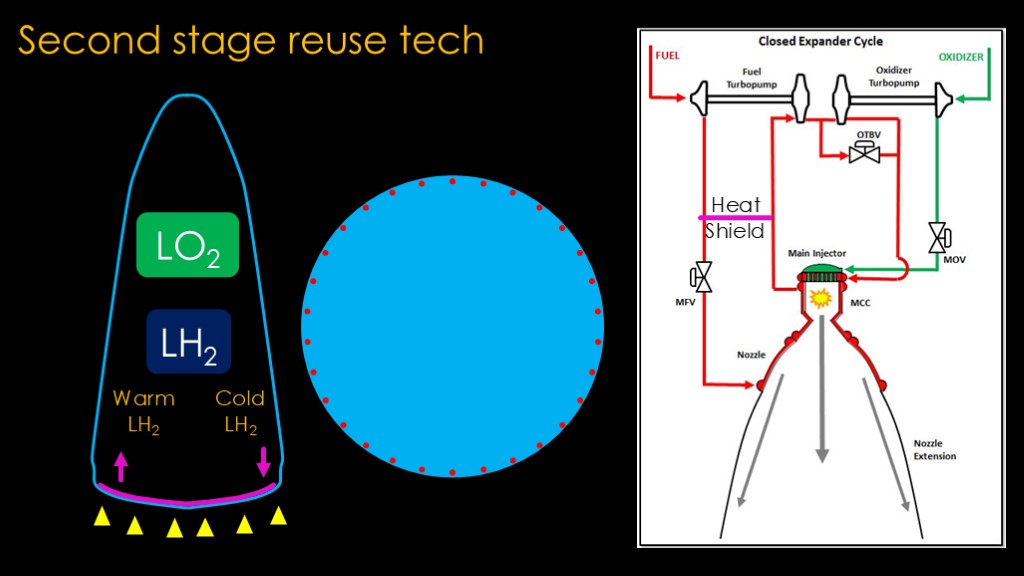
The point of their design as all about getting the second stage through reentry and back to the ground. Their approach is a new one, using active cooling to keep their second stage from melting.
Build into the base of the second stage is a heat exchanger, and it will take in cold liquid hydrogen, absorb reentry heat, and use that heat to drive the expander cycle turbopumps the same way nozzle heat is used on ascent.
It's not clear what happens to the heated hydrogen, but my best bet is that it is burned in the rocket combustion chambers with some liquid oxygen, helping protect the rocket chambers from the heat of reentry the same way Falcon 9 starts its engines to protect them.
The system that handles both ascent and descent and uses active cooling is Stoke's idea.
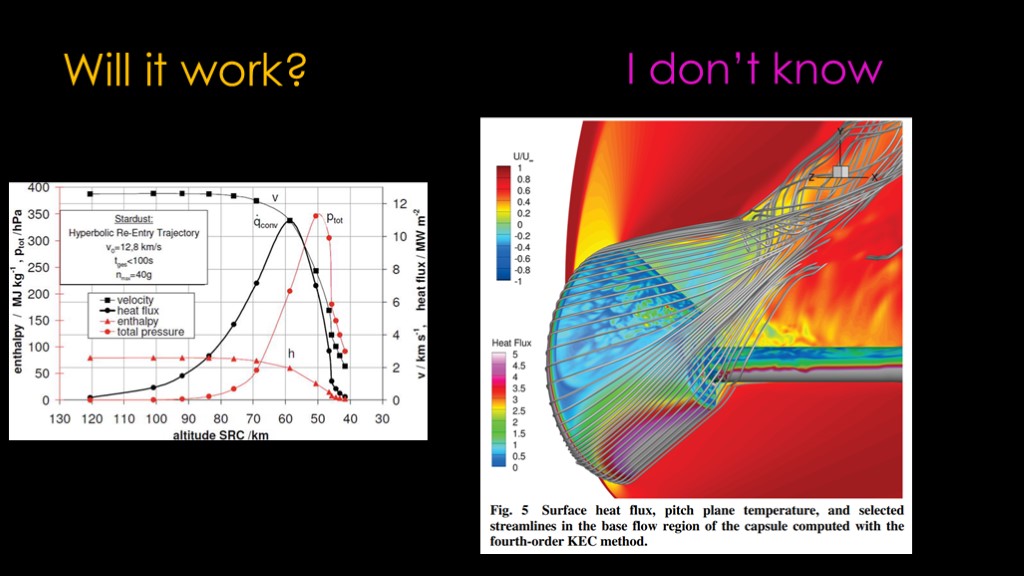
Will it work?
I've thought long and hard about this question, and my very firm answer is "I don't know".
Reentry heating is notoriously complicated to model, so this isn't an easy question to answer.

The best summary of what has been tried for active cooling appears to be this NASA memorandum from 1994.
My quick summary is that it turns out to not surprisingly be very complicated, though I will note that they were working primarily on winged structures which are much more complicated than the capsule shape that Stoke is envisioning.
This paper references 55 different papers, so enjoy your time exploring them and figuring out your answer on whether it will work.
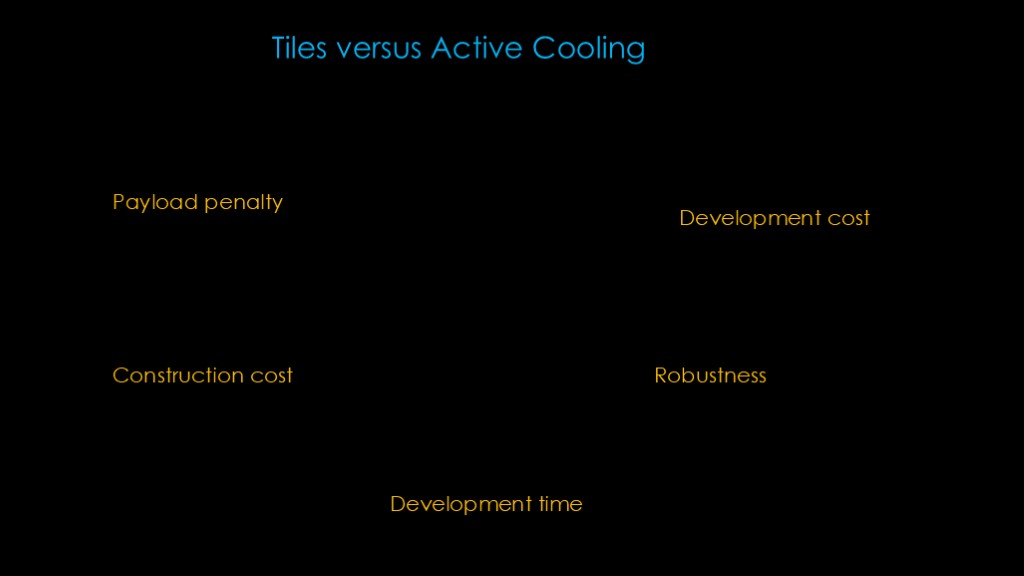
To figure out whether active cooling might be better, there are many things that you would want to consider.
Which one has a greater payload penalty? Is one 10% and the other 40%? Or are they pretty close?
How do their development costs and times compare?
How much will it cost to construct a vehicle using each technology?
Is one more robust than the other? What failure modes do they have?
Weighing all of these factors would be a long and challenging project for any engineering team, and it's not something we can do looking from the outside.
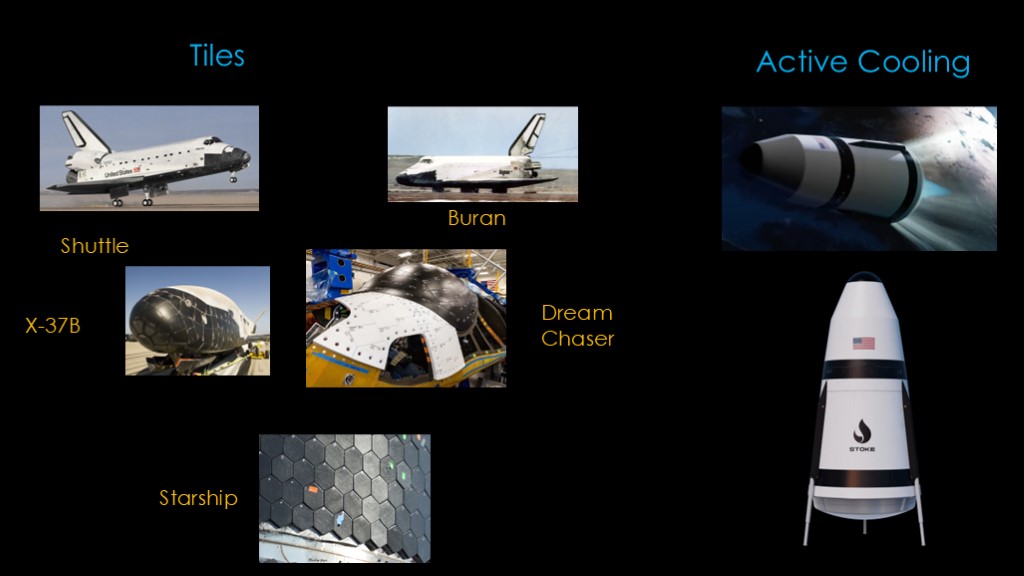
It's often very useful to look at prior art.
If we look at existing systems, the shuttle orbiter used heat shielding tiles. The soviet "Buran" shuttle used heat shield tiles.
The air forces X-37B "minishuttle" uses heat shielding tiles. Sierra Nevada's dream chaser cargo system uses tiles.
And of course, SpaceX's starship uses heat shield tiles.
5 systems already deployed or entering testing, all using tiles.
And on the other side, a new idea that has been explored a bit but never built.
Conventional wisdom is always right except when it isn't, but you need to really understand what is going on before you decide that you are right and everybody else is wrong.

My next analysis point is a team that can execute on the idea.
Stoke has two co-founders...
Andy Lapsa is the CEO. His past experience is as the director for the BE-3 and BE-3U engines at Blue origin and as an engineer for the BE-4.
His co-founder Tom Feldman is CTO for the company, and he brings specific experience from the BE-4 program.
Engine development experience is obviously critical to building a new launch system, especially one with new engine concepts.
What I don't see at stoke is a entrepreneur founder type - the person who will figure out the critical path to operation, the person who will deal with investors, the person who understands efficiency in both time and money. I also don't see the distilled vision I would hope for - there is a big long term vision but what is the path to take a small company in Kent Washington to one that is successful with customers around the world? The entrepreneur/founder is the make or break person for most startups.
My other concern is about both founders coming from Blue Origin. Blue Origin is likely the new space company that is most like the old space companies and therefore least likely in my opinion to create entreprenuers.
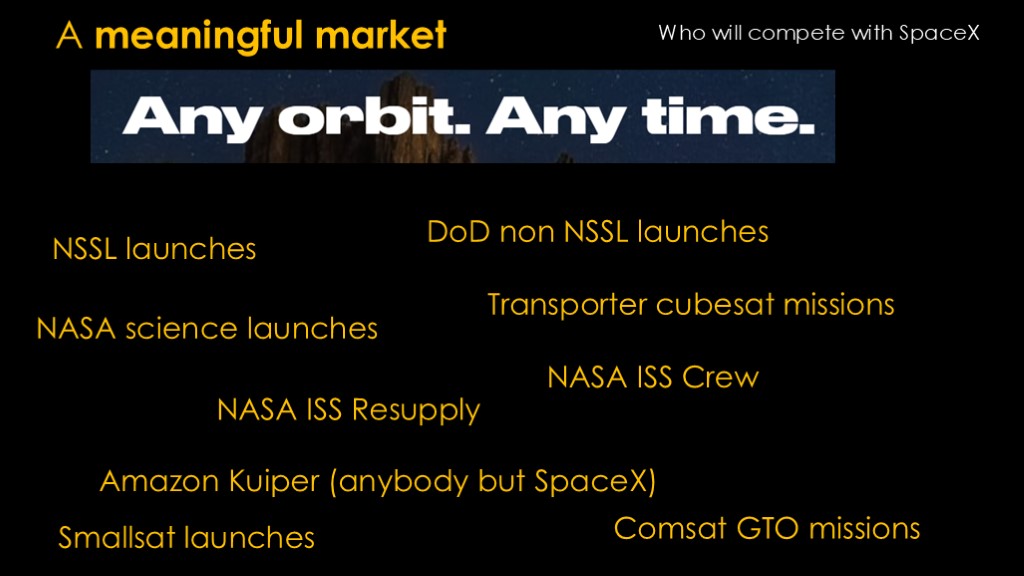
The next analysis point is a meaningful market.
Looking at Stoke's website and their materials, what I see as their market description is "any orbit. Any time."
The US launch market is very complex - I can come up with 9 distinct markets. Some are competitive, some are very hard to compete in. If you want more detail on these markets, see my video "who will compete with SpaceX"
To compete in one of these markets, you need be a credible company and be able to compete directly with the three US companies launching now - Rocket Lab, ULA, and SpaceX.
All three of these companies have advantages - existing launch sites, lucrative fixed-price contracts, reasonable flight rates. These are structural advantages - ones that are very hard for new entrants to counter.
You need a compelling reason why a customer would choose to fly with you over an existing competitors.
And just to make things more fun, all the existing launch companies are not selling services at their most competitive price, they are selling at the price that maximizes their revenue. Aim to undercut them by 25% and you may find out that they can undercut your best price.
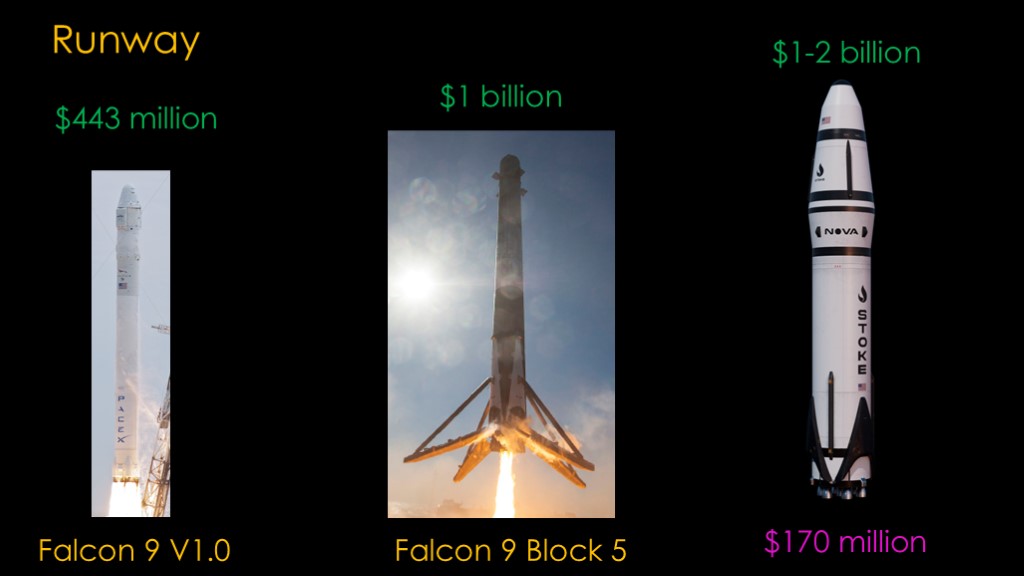
Finally, you need to have runway - enough money to keep your company running for long enough for you to reach your goal and get a chance to compete. Lack of enough runway is the killer of startup companies in many different industries.
We interestingly have some numbers we can throw at this. Falcon 9 1.0 was a simple launcher using the already developed Merlin 1C engine plus a new vacuum variant of that engine. It contained no real innovations.
SpaceX spent $443 million developing that simple rocket, including the first two flight vehicles.
Later versions of Falcon 9 deployed two new ideas - a significantly improved version of the Merlin engine, and all the tech for first stage landing. That cost them a further $1 billion.
Stoke is developing a first stage with a brand new advanced engine and they plan to land it like Falcon 9. And they have the brand new second stage reuse tech to develop and test.
That's a lot of new stuff, and a reasonable price tag is somewhere between $1 and $2 billion dollars.
So far, Stoke has raised $170 million in total. Will that be enough for them to finish their idea? Will they be fast enough compete with Starship and Neutron?
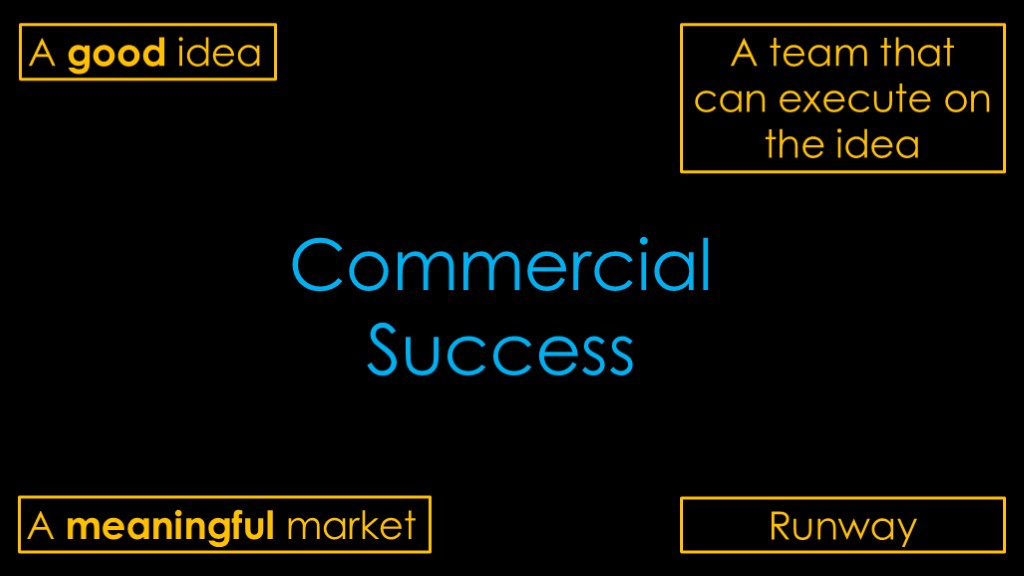
What does my analysis suggest?
Stoke has an interesting idea, but I don't have enough information to evaluate whether it's a good idea compared to the alternatives.
I'm concerned that they don't have the right leadership team - they are high on engineering but lack the driving founder who can do all the things that need to be done.
I'm not sure what market they are trying to target. Launch is very much a cutthroat business and the existing companies are entrenched. You need a good market plan
Stokes plan is quite complex and my guess is it's $1-2 billion to execute on their idea. They currently have less than a tenth of that.
I love different ideas, but my analysis is that Stoke is unlikely to become a commercial success.
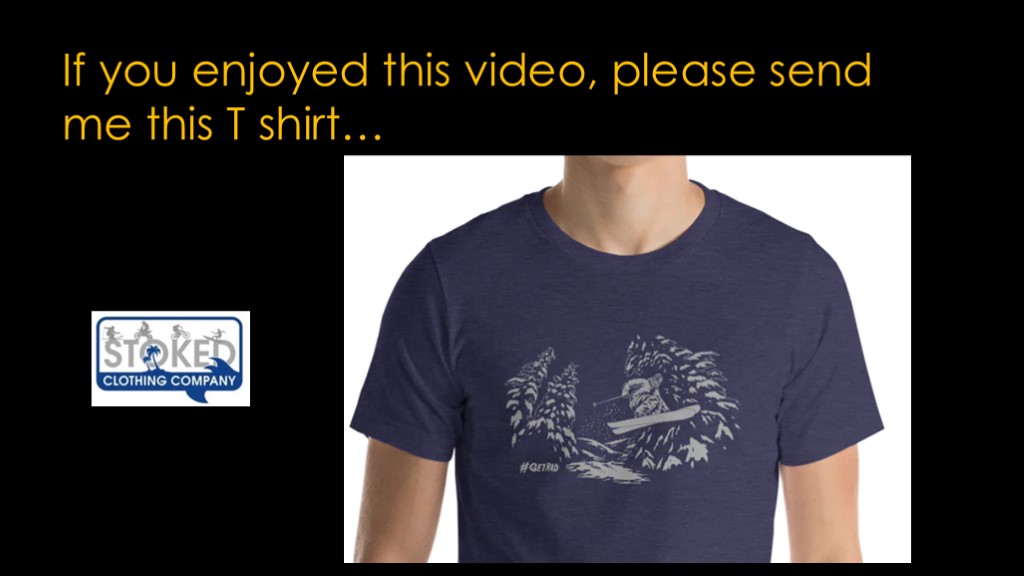
If you enjoyed this video, please send this T shirt, size medium, Heather Midnight Navy.